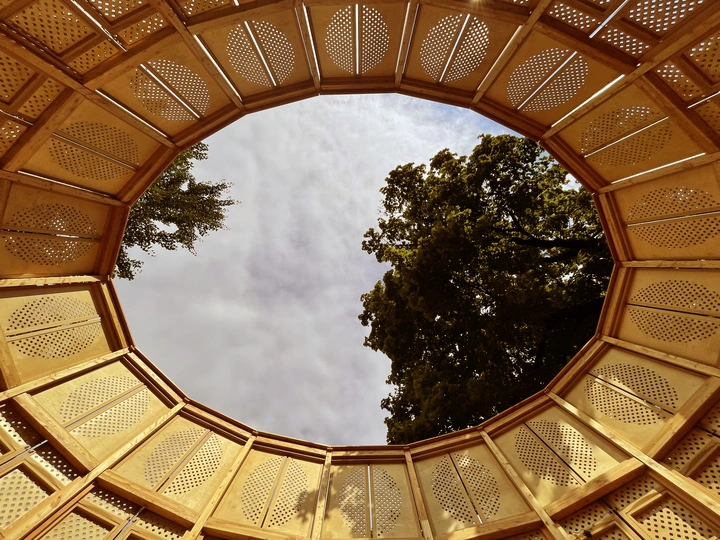CoForum: structuring deliberative plurality

Sebastian Hicks
Nipun Prabhakar
Stefan Breuer, Nipun Prabhakar, and Sebastian Hicks are the co-founders of OPEN FORM. Their combined expertise spans across continents and disciplines, with a focus on indigenous justice, social justice practices, and socio-spatial movements.
Sebastian and Stefan's architectural explorations revolve around the concept of "performative urbanism" and the co-creation of public space, exemplified by projects like the "Chapel of Many" and "Coforum." Their work often utilizes transformable structures, like walls made of chairs, where the participation of individuals directly shapes the physical and symbolic nature of the space. Hicks investigates how architectural objects can act as tools for reconciliation, dialogue, and fostering inclusivity, often engaging with intergenerational learning and collaborative building processes that bridge traditional craft with modern techniques
Stefan's research refers to both built structures and social systems. The logical consequence of this is to encourage engagement with the societal and legal frameworks governing spatial production. For example, the results of a research project for the state of Carinthia were incorporated into a guideline for the housing subsidy law.
Nipun Prabhakar's architectural investigations are deeply rooted in a commitment to community-driven processes, traditional wisdom, and radical resourcefulness. His work, particularly through the Dhammada Collective, focuses on designing spaces that are both functional and culturally resonant, often involving extensive documentation of indigenous communities and collaboration with local artisans. He champions an aesthetic that celebrates local and reused materials, striving to create resilient and adaptable environments through material circularity, such as salvaging construction debris. Prabhakar's approach prioritizes enabling communities to shape their own environments, challenging conventional, top-down design paradigms.
Political form is aesthetic in nature, so too are political struggles as they are inextricably related. Politics is related to the sensible, as in tangible (Jaques Rancieres). It’s about who we can hear, who we can see, who we will allow into our space, or who gets to occupy space and how. These are fundamental sensory things. The image of citizen has to change. A politics in terms of sensory realities, linked to praxis, icono-praxis, sensory praxis must emerge. This will not come in due to a new law or a new monument, it has to be a host of new monuments, a new hegemonic order and a new regime of the senses of the body (Kagri Jain). Enabling deliberative plurality requires and open form.
Marginal, financially poor and temporary in nature, deliberative processes and civic assemblies’ often default to occupy invisible spaces. If we reflect upon all of the aesthetic tools employed by traditional forms of governance or the powerful aestheticization of capitalism, the lack of form or symbolic language employed by alternative processes of deliberation becomes counter-productive.
The challenge is to deliver coherence of meaningful identity, deliver coherent transformative momentum, whilst countering a natural suspicion of symbolism or monument. The Chapel of Many and CoForum are projects undertaken as a collaboration between Open Form, artists and facilitators working in the creation of new modes of peace, deliberation and artistic enquiry. The chair is a wall, a door, a window. One chair is a piece of furniture, 100 chairs are an expression of civic action. The chairs create a space, augmented through sound and narrative, exploring our relationship to the public realm, and to each other. ‘The essence of equality is in fact not so much to unify as to declassify, to undo the supposed naturalness of orders and replace it’,(Jacques Rancieres). It is the nature of the object, that it transcends traditional forms and carries within it the ambiguity of future potentials.